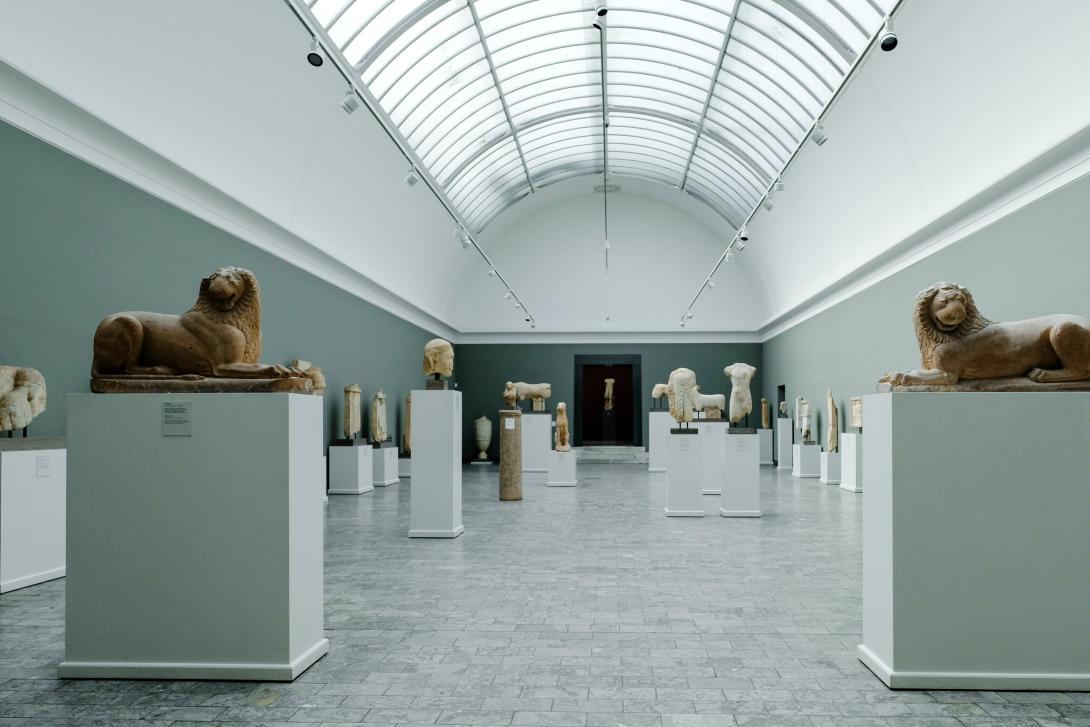
STUART SEMPLE STILL remembers the first time art knocked him on his ass. It was the late 1980s and 8-year old Semple was at the National Gallery in London, face to face with Vincent van Gogh’s Sunflowers. “The painting leapt off the wall; it was like it was hovering. It totally overloaded my system. My mum said that I was shaking,” he says. “Looking back, I’d say it was a state of awe.”
Since then, Semple has obsessed over ways to make that kind of museum experience available to everyone. He even knows the ideal place to build it. “The internet is probably one of the most powerful public spaces we have,” he says. “I've always believed that it will be a place that makes art accessible and brings people together.” A decade after he first beheld Sunflowers, in the age of dial-up internet, Semple built his first virtual gallery using Flash. Limited internet access and crippling load times made it almost impossible to use. Semple put the project to bed, but he never stopped dreaming of the virtual museum of the future.
Suhita Shirodkar is an urban sketcher, illustrator, and educator based in San Jose, California.
This story is part of WIRED's 2021 Resilience Residency. Read more about the residents here.
By early 2020, Semple wasn’t the only one with online exhibits on his mind. Shows and art fairs the world over went virtual amidst Covid-19 lockdowns, and popular platforms like Kunstmatrix began hosting Art Basel and The Other Art Fair. Art flooded the blockchain in the form of non-fungible tokens (NFTs). It was an inflection point. Museums and galleries had long worked to share art virtually, but the consensus often remained that it was a substitute, never as good as seeing a painting or sculpture in a brick-and-mortar institution. “Art needs to be seen in person,” says KV Duong, an artist who curated his first online show last year. “Art lovers want to see the texture, smell the ambiance, meet the people, and just feel that physical space of standing in front of a work. For museums, the biggest tick mark is community engagement, and I don’t know if you’ll be able to get that in a virtual space.” Semple’s time had come to prove that notion wrong—or at least try.
In March of last year, Semple assembled a team. Funded by Semple himself, the group’s skills spanned art, curation, architecture, and technology. Their goal? Build VOMA—the fully online museum he had dreamed of for so long. Within half a year, Semple’s vision was a (virtual) reality, free and open to anyone who wants to visit. With its flexible architecture, the current setup—two large galleries full of art, an outdoor sculpture pavilion, and an artist space for performance pieces—is just the start of a museum that can expand endlessly. Created using the video game software Unreal Engine, it's entirely viewable on any device with a web browser.
“You can do anything—that’s really exciting and really intimidating,” says Semple. “We don’t need to ship anything, move anything, or insure anything. If a gallery isn’t big enough, we just make it bigger. We don’t need the planning commission to put a new floor in.”
What's even more exciting is the art VOMA can show. In its current exhibit, Why We Shout: Art and Protest, a destroyed Diego Rivera fresco from Rockefeller Center in New York City shares the room with one of Banksy’s most iconic pieces, painted on a wall in Palestine—a juxtaposition impossible in a physical museum. The virtual grounds also showcase the Triumphal Arch of Palmyra from Syria, which was destroyed by ISIS in 2015 and reconstructed in VOMA using 3D scans of the original structure.